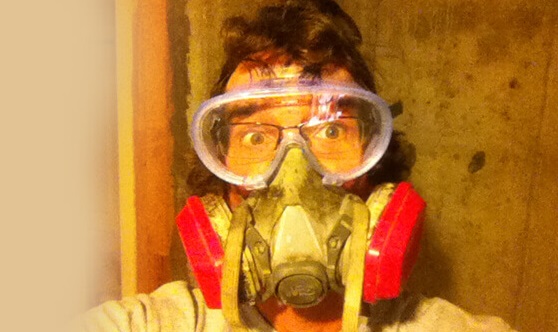When it comes to asbestos testing, it’s important for business owners and managers across industries to understand the two most common forms of testing: TEM (Transmission Electron Microscopy) and PCM (Phase Contrast Microscopy).
While both are used in asbestos testing, they’re not interchangeable. Let’s take a look at each of these methods that are commonly used by asbestos testing companies, their benefits, and when they should be employed.
TEM (Transmission Electron Microscopy)
Transmission electron microscopy is a type of microscopy that uses a beam of electrons to create an image. This kind of imaging is used in asbestos testing because it is capable of producing high-resolution images on a very small scale. In addition to being able to provide detailed images of individual fibers, TEM can also measure the length of fibers. This makes it ideal for counting the number of fibers present in a sample as well as determining whether or not those fibers are asbestos-containing materials (ACMs).
The Benefits of TEM Testing
TEM provides numerous advantages over other types of analysis, including:
- High resolution imaging – The technology produces highly detailed images which can help identify the presence or absence of ACMs.
- Accurate fiber measurements – TEM can accurately measure the length, width, and other characteristics of fibers which helps determine if they are hazardous or non-hazardous.
- Fast results – The process takes significantly less time than traditional methods such as phase contrast microscopy (PCM).
- Less expensive – Compared to other types of analysis such as X-ray diffraction or XRF spectroscopy, TEM is cheaper and easier to use.
When is TEM Used?
TEM should be used whenever accuracy is required or when there is a need for high resolution imaging of samples. It’s particularly useful for identifying asbestos-containing materials in samples with complex structures that would be difficult to analyze using traditional methods such as phase contrast microscopy (PCM). Additionally, it can also be used for air monitoring and total fiber counting applications where speed is an important factor.
PCM (Phase Contrast Microscopy)
Phase contrast microscopy utilizes light waves instead of electrons like transmission electron microscopy does. It works by passing light through a sample which then creates an image that has higher contrast than conventional bright field microscopes do. This makes it possible to detect smaller particles than would otherwise be visible under normal lighting conditions. Like TEM, PCM is used in asbestos testing because it allows scientists to identify the presence or absence of hazardous fibers.
The Benefits Of PCM Testing
PCM has several advantages over other forms of analysis including
- Higher accuracy – Due to its ability to detect smaller particles than conventional bright field microscopes do, PCM provides more accurate results than traditional methods such as optical microscopes do.
- Faster results – Unlike transmission electron microscopy (TEM), PCM requires no additional processing steps so results can be obtained faster without compromising accuracy.
- Lower cost – Compared to other types of analysis such as X-ray diffraction or XRF spectroscopy, PCM costs much less and takes less time too.
When is PCM Used?
PCM should be used whenever accuracy isn’t essential but speed and cost are important factors–such as in cases where quick identification needs rapid turnaround times onsite inspections where equipment may need immediate re-inspection due to changes in environmental conditions, etc.). Additionally, it’s also useful for air monitoring applications where fast response times are needed but low levels of precision aren’t necessary–such as when monitoring for compliance with health codes, etc.)
Conclusion
Knowing the difference between TEM and PCM Asbestos Testing will help businesses make informed decisions about how best to ensure their safety protocols meet industry standards while staying within budget constraints. Both techniques provide different benefits depending on what you need them for.
Both of them serve as effective ways to detect hazardous materials quickly and accurately while minimizing costs associated with lengthy analysis procedures that might otherwise cause delays or extra expenses down the line. Therefore, understanding when each method should be utilized will keep your business running smoothly while keeping everyone safe from potential dangers related to airborne contaminants that could otherwise go undetected without proper testing protocols in place!
If you’re wondering about quality asbestos testing services by professionals at your place, then you can simply contact us. We respond quickly, listen well, and assure your safety and ours, thereby guaranteeing satisfaction.









































